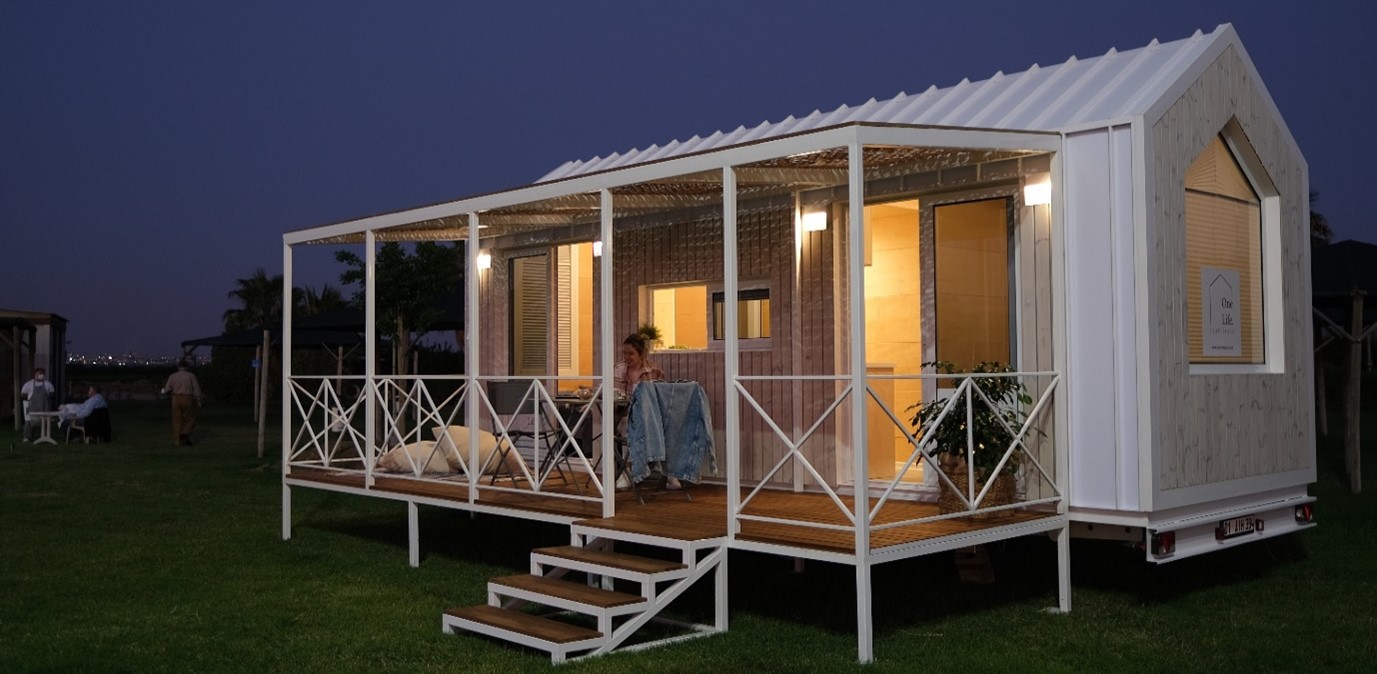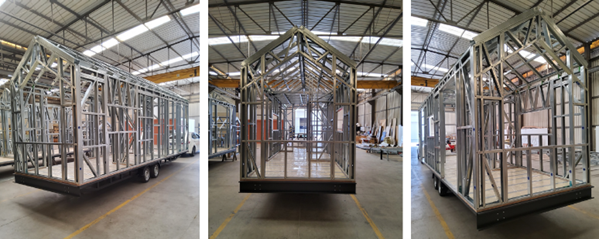Introduction
In the ever-evolving landscape of residential construction, the demand for alternative housing solutions is rising. Accessory dwelling units (ADUs), tiny homes and transportable homes have gained popularity for their affordability, versatility and sustainability. One key factor that can significantly enhance the construction of these is off-site manufacturing and steel framing. We explore the numerous benefits that steel framing brings to US residential developers and manufacturers.

The Backbone of Resilient Homes
Steel is renowned for its strength and durability. When it comes to constructing ADUs, tiny homes and transportable homes, having a robust structure is paramount. Steel framing provides exceptional structural integrity, ensuring that homes can withstand the test of time and environmental challenges. Whether it's extreme weather conditions or the wear and tear of transportation, steel-framed structures offer a level of resilience that can't be matched by traditional wood framing.
Unlocking Mobility
Transportability is a key consideration for buildings made in a factory. Whether it's a tiny home on wheels or a transportable ADU, the weight of the structure is a critical factor. Steel framing is not only strong but also lightweight. This makes transportation more efficient and cost-effective, enabling developers to offer homes that can be easily relocated without compromising on structural integrity.
Shaping the Future of Living Spaces
Steel framing allows for greater design flexibility, empowering developers to create unique and innovative living spaces. The inherent strength of steel enables the construction of open floor plans and expansive windows without the need for excessive support beams. This flexibility in design fosters creativity and allows developers to meet the diverse preferences of homeowners seeking alternatives to traditional housing.
A Green Choice for Modern Living
Sustainability is a fundamental consideration in modern construction. Steel is a highly sustainable material, with a high recycling rate and minimal waste during manufacturing. Choosing steel framing for ADUs, tiny homes and transportable homes aligns with the growing demand for eco-friendly housing options. Additionally, steel is resistant to pests and mold, contributing to a healthier indoor environment for occupants.
 |
 |
Meeting Market Demands for Speed
Time is money for the construction industry, and steel framing offers significant advantages in terms of speed and efficiency. Prefabricated steel components can be precisely manufactured off-site, reducing construction time on-site. This not only cuts down on labor costs but also allows developers to meet the increasing demand for quick, affordable and efficient housing solutions.
Long-Term Cost Savings: A Wise Investment
While the upfront cost of steel framing may be slightly higher than traditional materials, the long-term savings are substantial. Steel is resistant to rot, decay, and termite damage, reducing maintenance costs over the structure's lifespan. Additionally, the durability of steel-framed homes often leads to lower insurance premiums, making it a financially savvy choice for both developers and homeowners.

Building Tomorrow, Today
As the housing landscape continues to evolve, embracing innovative construction materials and methods are essential for staying ahead of the curve. Steel framing emerges as a game-changer for developers and manufacturers engaged in the creation of accessory dwelling units, tiny homes and transportable homes. Its unparalleled strength, design flexibility and sustainability make it the ideal choice for those seeking to redefine residential living in the US. By choosing steel framing US developers not only meet the demands of today's market but also contribute to creating strong, efficient, and environmentally conscious homes. There is no better time to build steel-framed residential constructions in the US than now.
You may also be interested in reading, fire safety with steel framing, savings with steel framing, steel framing boosts resilience and smart cities with steel framing.
Discover more in our residential eBook.








